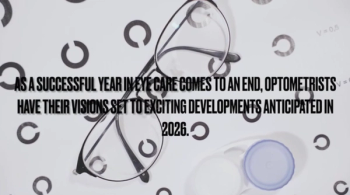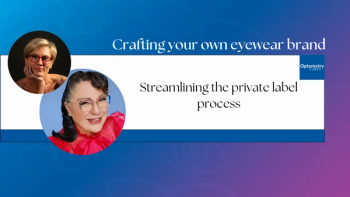
Survey finds majority of US patients delaying eye care despite experiencing poor eyesight, eye health
Survey participants cited cost concerns, perceived inevitability, and deprioritization as obstacles to receiving eye care.
Versant Health’s fourth annual Vision Wellness Study recently found that as many as 3 in 4 US citizens are disrupted in their daily activities by poor eyesight or eye health; however, over half of surveyed patients stated that they delay or avoid eye care because it doesn’t “feel urgent.”1 Survey participants cited cost concerns, perceived inevitability, and deprioritization as obstacles to receiving eye care, according to a news release.
“A vision benefit isn’t just an add-on – it can be a cornerstone of comprehensive care,” said Neelam Gor, MD, chief clinical officer at Versant Health, in the release. “Our study highlights how vision benefits can serve as an essential bridge to regular eye care, but only when the coverage is understood and perceived as valuable.”
The survey included 3045 US adults 18 years and older who must share responsibility for health care decisions or “be the primary decision maker in their household,” according to the release. Data were collected from 42 interviews with US consumers, eye care professionals, employee benefits brokers, health plan executives, and HR decision makers in small, midsize, and large businesses. Surveys, interviews, and analysis were conducted by global strategy, insights, and analytics group STRAT7.1
Over half (53%) of patients who get their eyes tested less than once every 2 years stated that cost concerns or a lack of access to vision care benefits were the main reasons why they weren’t receiving more regular examinations. Additionally, 66% of patients stated that they viewed deteriorating eye health as an inevitable part of aging, negating the need for regular examinations. A majority of survey participants (63%) stated that they were prioritizing other aspects of their health over their eyes, with Gen Z at 69% and millennials at 70%.1
The survey results also found significant knowledge gaps related to eye care and vision benefits, according to the release. About half (55%) of patients can correctly define the difference between a comprehensive eye examination and a vision screening. Additionally, only 30% of patients confidently know that an eye examination can help diagnose diabetes, with 25% confidently knowing its role in hypertension detection. However, about 9 in 10 patients (86%) reported that they are more likely to schedule an eye examination once they understood how these examinations can aid in the early detection of serious medical conditions, including diabetes, heart disease, and high blood pressure.1
“Overcoming these barriers and the low sense of urgency is imperative for improving eye health outcomes. Our research shows that access to vision benefits, combined with an understanding of how the coverage works, are key drivers of seeking eye care,” said Meredith Ryan-Reid, Versant Health CEO, in the release. “When carriers, vision care providers, and employers help connect vision care with overall health, 4 in 5 people enrolled in vision benefits are more likely to use them.”
Patients also displayed a desire for more engagement and direction from vision and health care carriers, with 71% stating that they are likely to seek advice about eye health from carriers, 75% are looking to their eye care providers to share advice on how nutrition can improve eye health, and 86% of parents are seeking eye care advice for their children.1
Patients also voiced an interest in better understanding their vision benefits and how to choose and use them. As many as 67% of patients offered vision coverage through their employer or health plan state that the benefit’s value hasn’t been clearly explained, or they report that it is confusing for them to select the right plan. Over 60% of patients also stated that a clearer explanation of how their plan works, including what is covered, out-of-pocket costs, and available discounts, would make them more likely to enroll in vision benefits.1
Reference:
Despite majority of Americans struggling with the impact of poor eyesight and eye health on daily life, more than half are delaying or avoiding eye care. News release. Versant Health. July 1, 2025. Accessed July 21, 2025.
https://versanthealth.com/press-releases/fourth-annual-vision-wellness-study/
Newsletter
Want more insights like this? Subscribe to Optometry Times and get clinical pearls and practice tips delivered straight to your inbox.













































.png)


